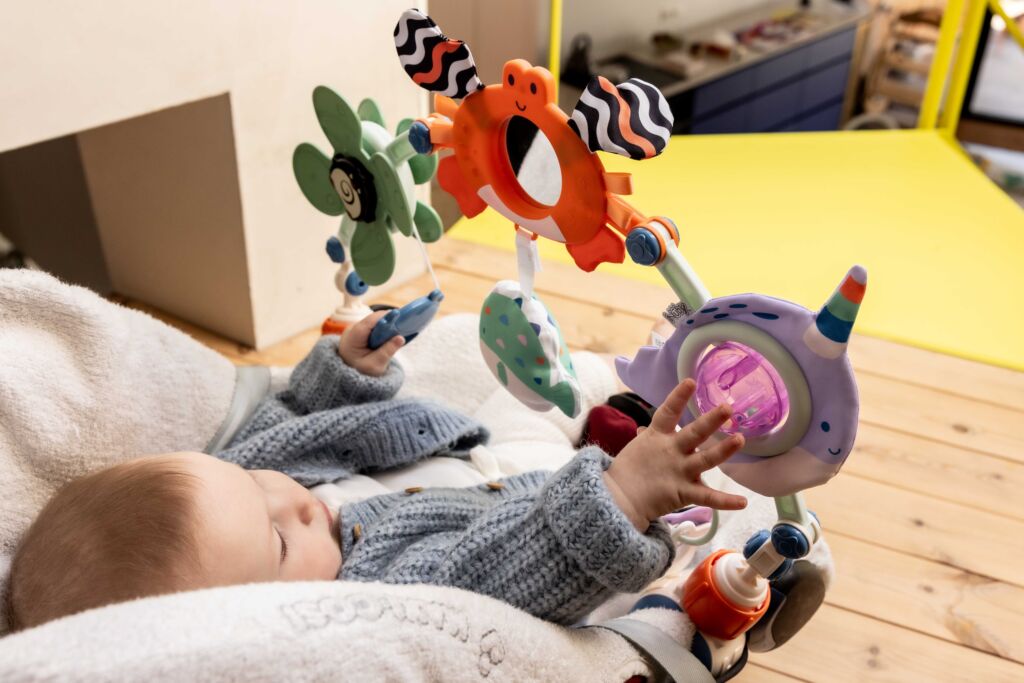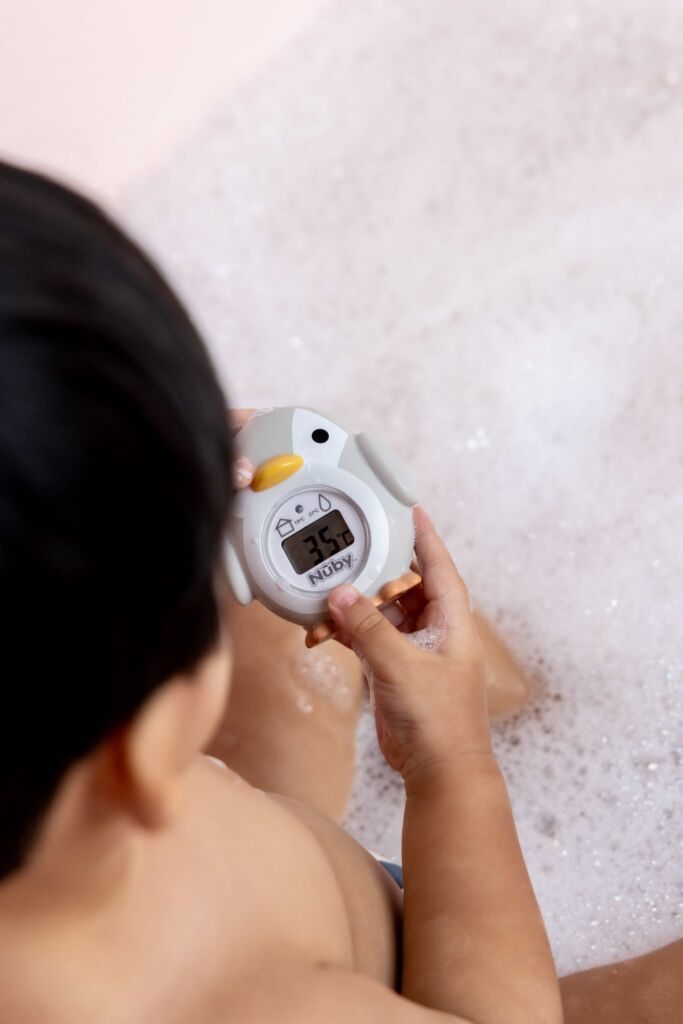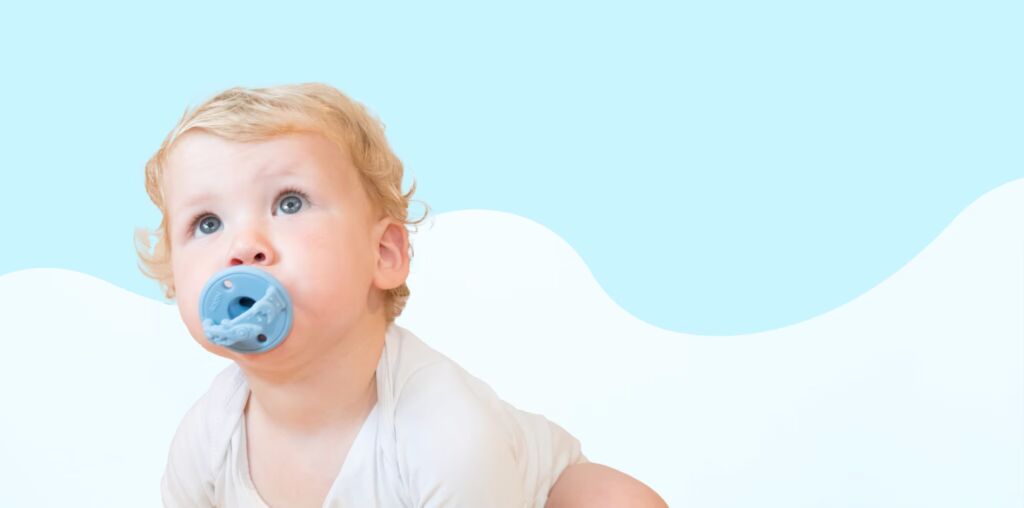As soon as babies see the light of day, they effectively see little more than that: light, shapes and movement. And all in black and white, because your baby will only register colours later. In this article you can read about how this colour development happens, and how you can use toys to support this visual exploration.
Light and dark
In the womb, a foetus can already distinguish light and dark. After about 25 weeks, they can open and close their eyes. If you are enjoying the full summer sun with your bare, round belly towards the end of your pregnancy (don't forget your sunscreen), your baby can see it as a lighter glow through your skin.
A newborn baby still has fairly blurred vision, but is already very fascinated by contrasts and the difference between light and dark. For example, your baby loves looking at your face - especially the (contrasting) combination ‘eyebrows-hairline’ is a winner. Only after 2-3 months will that focus shift to your eyes.
Rods and cones
In the first weeks after birth, a baby experiences the world mainly in black, white and shades of grey. This is because our retina consists of two types of cells: rods and cones. Rods are light-sensitive, allowing you to see contrasts and movement even in low light. These cells are well developed at birth.

Cones, which make you perceive colours, are not fully developed until 3 months of age. This is all to do with our innate survival instinct: it is more convenient for newborns to recognise contrast (such as mummy's face) rather than colour.
That visual development, by the way, happens at lightning speed: 6 to 8 weeks after birth, a baby starts to detect colours. First, the L cones are formed, which are sensitive to long-wavelength light - or red. This is followed by the M cones (green) and S cones (blue); for yellow, several cones are triggered simultaneously (L and M).
After 3 to 4 months, babies can already distinguish these different colours well. Only later do they start associating them with names like ‘red’ and ‘blue’.
Why do we often use primary colours in toys?
As soon as babies can distinguish colours, they develop a strong preference for bright shades. This is why baby toys are often red, yellow or blue: the primary colours. Red is the first colour babies see. Consequently, this bright colour quickly attracts their attention. So red toys are like a vitamin shot for their early visual development.

In babies, there is a stronger connection between colours and emotions than in adults. For example, warm colours like red and yellow stimulate energy and alertness - which is why many play blocks and rattles have those colours. Cold colours like blue and green, like pastels, have a calming and soothing effect. That's why they are ideal choices for bedding or soft toys.
How can you support your baby's colour development?
Tip #1: Choose toys in contrasting colours
Newborns love contrasts and the combination of white and black. So the black and white elements in our Ocean Friends range, as in this mobile for above a cot, are very deliberately chosen. They help your baby better distinguish shapes and objects - a real strength training for their cognitive growth.
After two months, you can switch to toys in various primary colours. This way they can learn about and recognise different colours while playing.
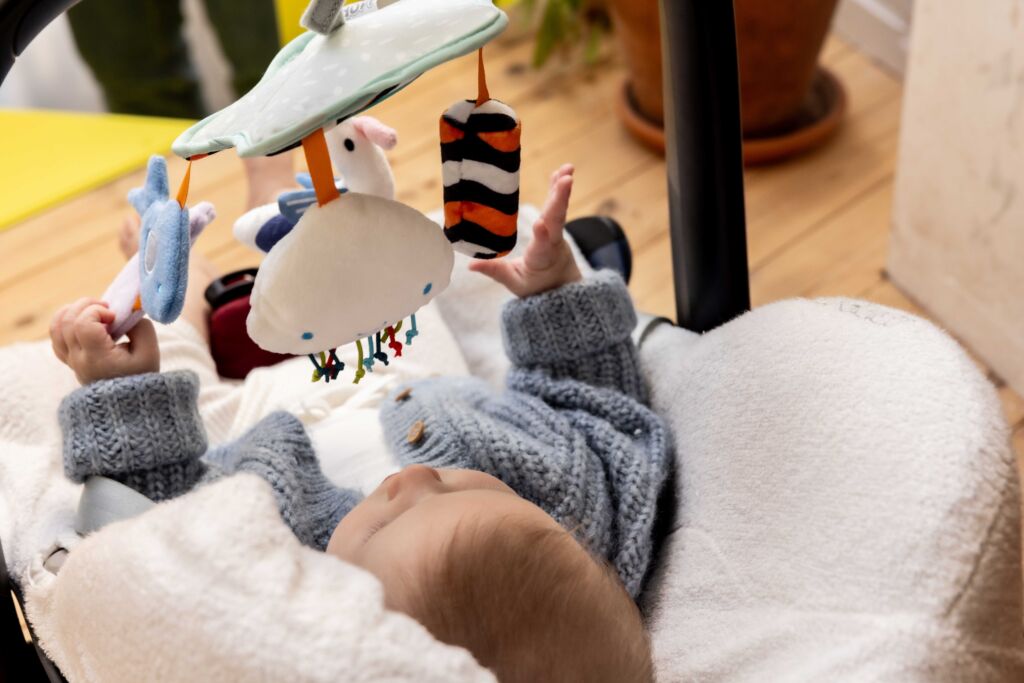
Tip #2: Go for clear patterns
Stripes, dots, polka dots, checkered patterns... Not only do they look fun, but they’re also great for your child's visual development. From rattles and bath toys to teething rings and play mats, there’s a wide range of (colourful) options, all of which help your baby learn to recognize patterns.
Just make sure to add some variety. One time bring out the striped cuddly toy, the next time the dotted play ball. This way, you create variation and avoid overstimulation.
Tip #3: Play with colour in motion
Hang a mobile with brightly coloured spinning figures above your little explorer's cot or pram. Movement attracts your baby's attention and stimulates both their sight and motor development. Indeed, sooner or later they will try to grab those toys, twist them, squeeze them ...
Tip #4: Don't forget the colourful reading material
Cardboard picture books with simple illustrations are an ideal way to support your baby's visual and cognitive growth curve. By reading aloud and naming the colours, you also boost their language development. Win-win!
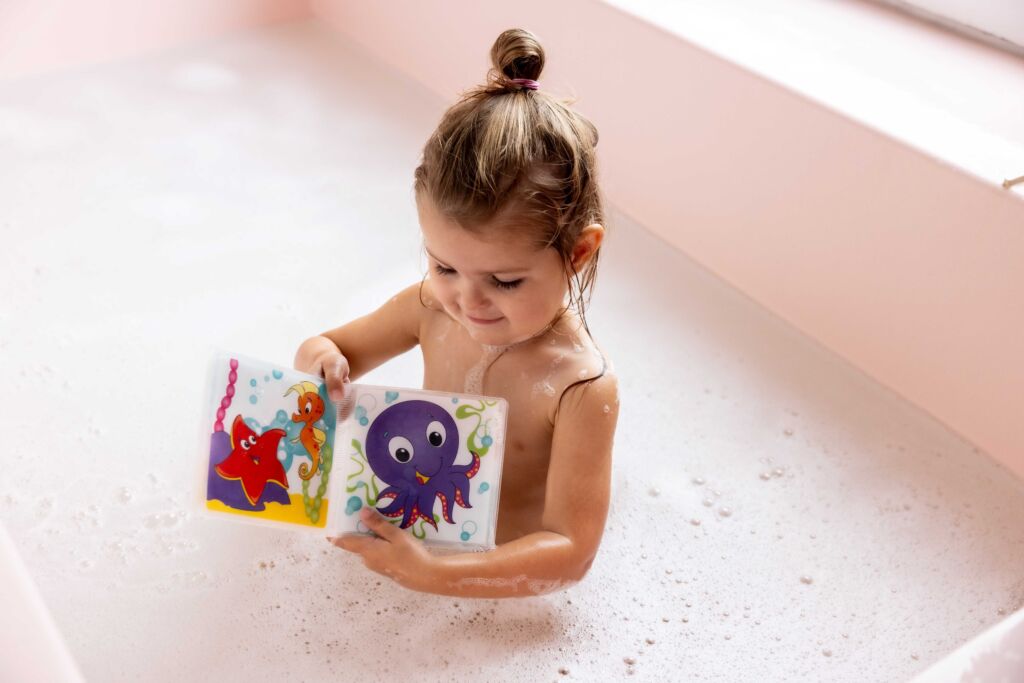
When you combine colours with a range of textures, it stimulates both your baby's visual development and sensory development in general. Think of soft toys and blankets. So preferably choose those with different textiles: plush, ribbed fabric, cotton ...

An introduction packed with benefits
A baby's colour palette develops rapidly. By consciously choosing toys that match their visual exploration, you can make the most of your child's growth and powers of observation. Contrasts, primary colours and playful patterns not only give your baby an introduction to all the colours of the rainbow, but also a brain boost. That's why at Nûby we pull out the colourful card full.

